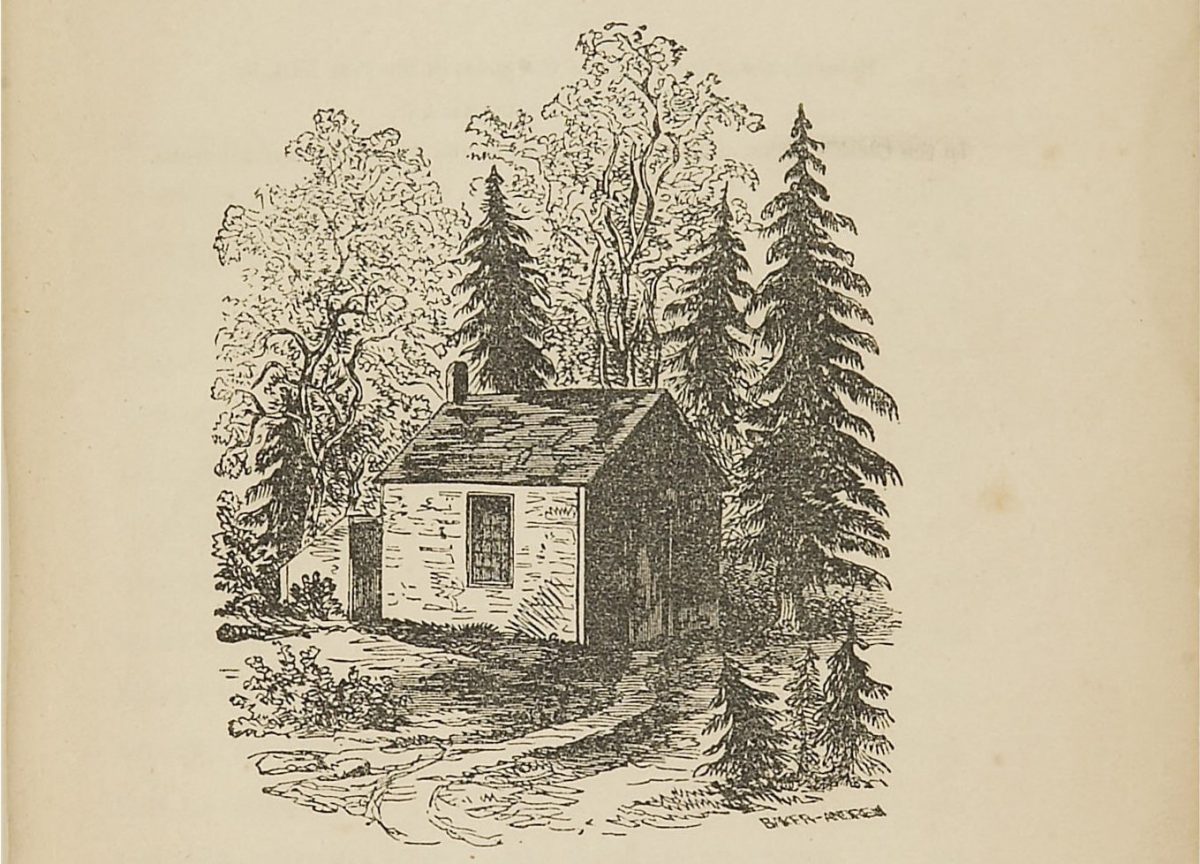From July 1845 to September 1857, Henry David Thoreau lived in a small, self-built, single room cabin. It stood beside Walden Pond on the property of Ralph Waldo Emerson, just outside of Concord Massachusetts within the territory of the Pennacook Nation. The structure itself was extremely simple, occupying a ten by fifteen foot footprint with wood construction, minimal finishing, and budget of approximately twenty dollars. Seven years after his time at Walden Pond, Thoreau published a book about his experience there and thoughts on living, titled Walden; or Life in the Woods. This book established Thoreau’s phenotypically unremarkable cabin as an object of architectural discourse to this day. The cultural, political, and discursive impact of his work may be best understood through the concept of minor architecture, “partially subversive architectural practices that are concerned not so much with structure per se, but rather the deployment of non-monumental buildings in physical space as a technological, social and political gesture.”1 In one of his most recognized quotes from Walden, Thoreau distills the mission of his time there: “I went to the woods because I wished to live deliberately, to front only the essential facts of life, and see if I could not learn what it had to teach, and not, when I came to die, discover that I had not lived.”2 Here, Thoreau presents his personalized notion of a good life, key to which is a necessary separation from the city and ultimately other people. This lifestyle choice was in many ways reactionary to mid-nineteenth century industrialization, urbanization, and westward expansion. Essentially, he chose to drop out and was able to do so through the patronage of his mentor, Ralph Waldo Emerson. The project of Walden, with Thoreau’s cabin at its symbolic center is not just about intentional, simple living, but also the meaning of political participation in the United States, bourgeoisie fetishization of poverty, and the social politics of environmental conservation.
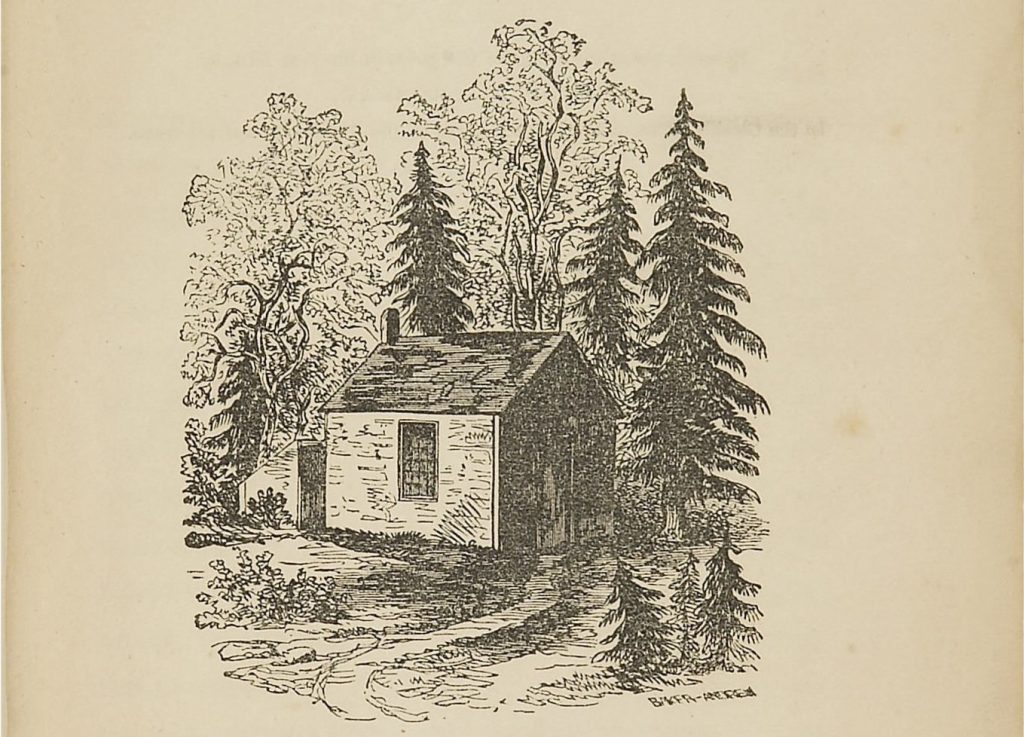
Key to understanding Thoreau’s philosophy and drive toward Walden is the aesthetic and cultural context of the mid-nineteenth century. This philosophy may be associated with the popularity of villa books and a widespread movement of “temporary rustication”, or a kind of “retirement phenomenon” in which upper-class landowners would “escape” from the city to renew themselves through an experience of the picturesque all while maintaining their contact with family and business associates.3 Within this context and movement, Thoreau’s occupation of Walden was hardly a radical political act. Rather, “it positions him firmly in an upper-middle class gentility, availing themselves of a carefully constructed, picturesque rural retreat—hardly a political gesture, let alone machinic heterogenesis.”4 Perhaps, Thoreau did not “live” at Walden so much as he occupied it: “Thoreau achieves a practical and theoretical understanding of dwelling because he is, in an ongoing way, engaged in the practice of dwelling. The house serves as a node in that network, but by no means an endpoint.”5 In this framework, his occupation of the cabin may be understood as more of a performance of lifestyle for an established upper class audience already engaged with and interested in this practice. Ironically, Thoreau participated in, performed, and even consumed an experience of solitude heavily mediated by the culture and social codes which he explicitly set out to abandon.
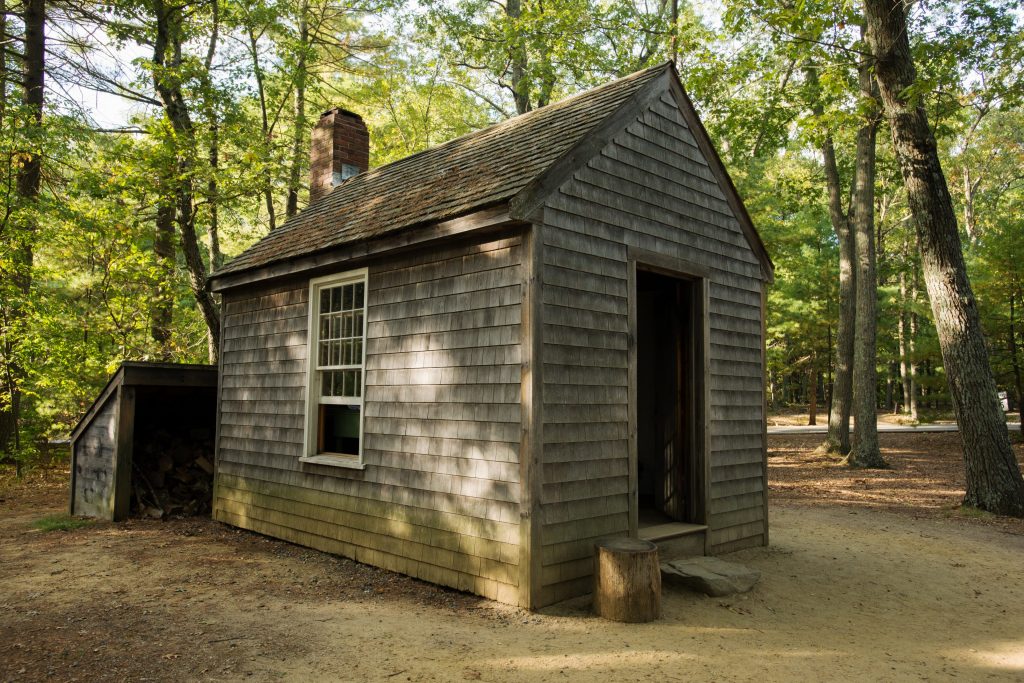
This tension is evident in his attitude regarding his neighbours as well as his compartmentalized experience of roughing it. He openly looks down upon a neighbouring farmer family’s living practices, essentially implying a gap in intention and virtue between their lifestyle and his, advising the family to “give up the few pleasantries in their life… apparently never considering that the simplistic lifestyle that is workable for a single man… may not be practical for a working family with small children.”6 This, in many ways, encapsulates his particular brand of bourgeoisie proto-libertarianism; the needs and material realities of a poor, working family living in similar conditions to Thoreau are incongruent with his understanding of a good life. This family does not have an alternative lifestyle to lean back upon, whereas he is living out his fantasy of the parts of their lifestyle which he has chosen to idealize. It is important to note that Thoreau routinely escaped from his escapist occupation, often taking meals and socializing at the home of Ralph Waldo Emerson or hiring townspeople to wash his laundry. M. J. Killingsworth neatly summarizes this compartmentalization of dedication to self-sufficiency: “Walden documents an experiment in creating a new kind of home place.. though the temporary quality of it shows the place to be more of a camp than a home.”7 Though often cited as a critical response to early-stage US capitalism, Thoreau’s philosophy is perhaps more critical of workers for allowing themselves to be exploited by the systems to which he is thematically opposed- systems which bolster his upper-class status.
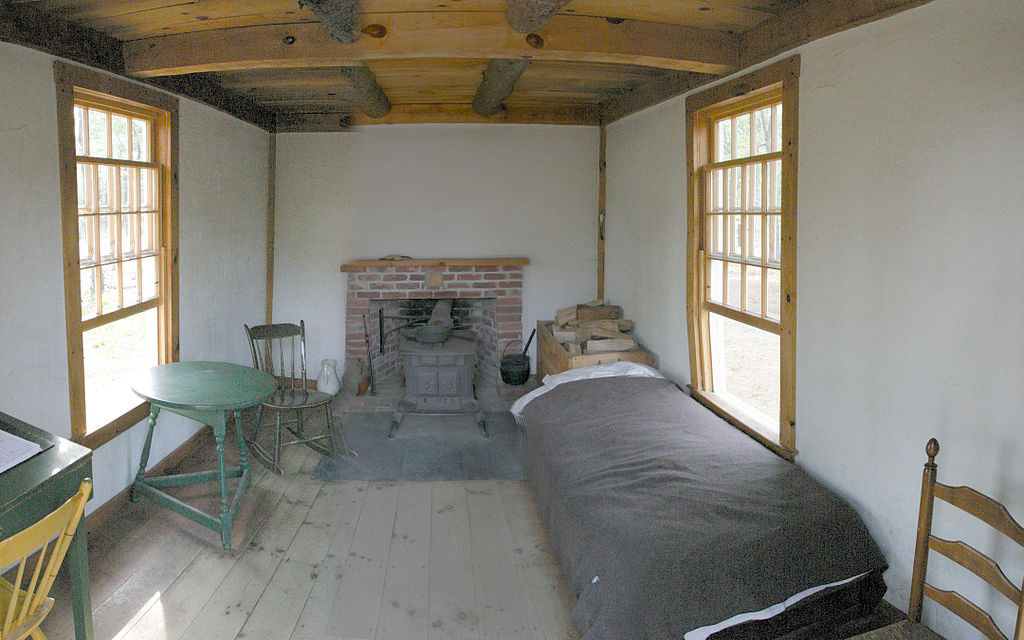
A major theme of the Walden project and Thoreau’s writing in general is a branch of nascent environmentalist thought. He carries a vocal opposition to industrial development and westward expansion, yet in a similar fashion to his broader cultural arguments falls short of any kind of holistic philosophy due to two main shortcomings: Thoreau’s practice is centered on the notion of an impossible generative passivity and he fails to consider the incompatibility of the material economic realities of lower-class people with his version of conservation. Moreover, Thoreauvian conservation has more to do with the preservation of the picturesque than environmental justice. This philosophy is built upon an obsession with primitivism and a culturally constructed notion of the real which may be traced directly to popular bourgeoisie thought of the period: “Thoreau calls life in this realm primitive and frontier life not because it is wild but precisely because it is governed by the essential laws of man’s existence… Not surprisingly, these laws instruct Thoreau in the ways of bourgeois society: what is natural and necessary is all that man obtains by his own exertions.”8 This is the same ideology which enables him to discount the lifestyle of his farmer neighbours because he sees them as corrupted by the exploitative capitalist systems which he has the option to avoid. Congruent with this ideology is Thoreau’s fascination with indigenous people: “Wherever I go, I tread in the tracks of the Indian… and if I consider destiny, I am on his trail”9 Thoreau idealizes his understanding of the life of indigenous people, but only as a projection of the notion of a kind of pre-industrial purity with which he has become so enamored. Thoreau’s idea of being metaphorically “on the same trail” as indigenous people is not just a reflection of his own arbitrarily constructed understanding of indigeneity, but also an idea of his own virtue within the value system he has created. To this point, Brooker remarks, “The difficulty with Thoreau’s adoration of the Native American is a problem that runs throughout Walden’s description of other residents: Nearly every person or group of people mentioned in the text is romanticised in one way or another…By saddling these people with individual moral lessons, Thoreau effectively dehumanizes them, making them more like subjects of an ethnography than sentient beings.”10
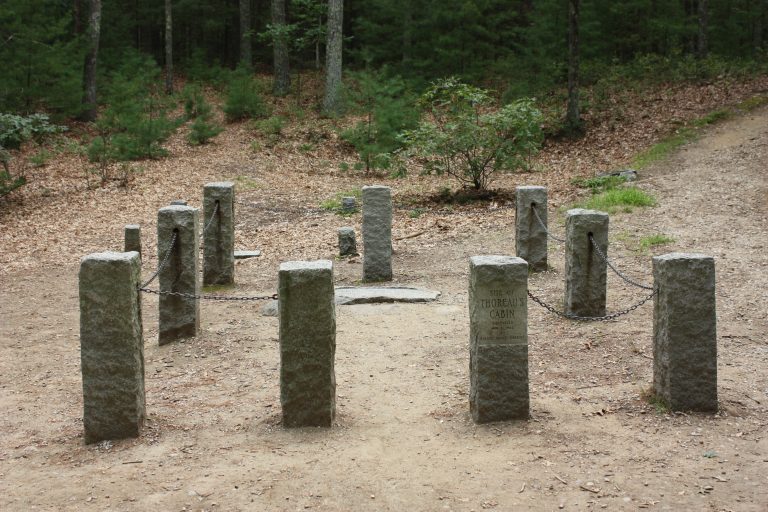
This essay refers to Thoreau’s dwelling at Walden Pond as a cabin. Thoreau refers to it exclusively as his “house”. This is a distinction between the physical object of his occupation and the symbolic, cultural object of his philosophy. This cultural object and its contemporary use as a symbol of bourgeoisie proto-conservationist ideology carry the same shortcomings as Thoreau’s experiment. Walden continues to capture contemporary architectural imagination as a vessel for the notion of “simple” living as a strategy toward some vague experience of “freedom”. A salient example of this notion is the packaging of the “tiny house” trend as a viable solution to address housing crises. The biggest issue here is that these dwellings, however efficient, must be put somewhere. The viability of Thoreau’s humble lifestyle was entirely predicated upon his access to free land from his patron Ralph Waldo Emerson. In summary, Thoreau’s simple solution to avoid the mounting ills of capitalism, industrialization, urbanization was not design, not austerity, not intentionality; but access to wealth. Walden was and is a powerful architectural symbol. It is romantic and exciting, but the simplicity of its message belies the complexity of its embedded political and cultural ideals. By decontextualizing and transforming the simplest vernacular into a symbol of intellectualism, Henry David Thoreu created a practice of performative dwelling so complex and confused, that even he could only stand it for two years.
Notes:
- T. Hugh Crawford, “Minor Houses/Minor Architecture,” AI & SOCIETY 25, no. 4 (November 1, 2010): 380.
- Henry David Thoreau, Walden, or, Life in the Woods, The Riverside Library (Boston: Houghton Mifflin, 1906), 98.
- Crawford, “Minor Houses/Minor Architecture,” 382.
- Crawford, 383.
- Crawford, 383.
- Ira Brooker, “Giving the Game Away: Thoreau’s Intellectual Imperialism and the Marketing of Walden Pond,” The Midwest Quarterly 45, no. 2 (January 1, 2004): 140.
- M. Jimmie Killingsworth, “Occupy Walden,” South Central Review 30, no. 1 (2013): 86.
- Robert Fanuzzi, “Thoreau’s Urban Imagination,” American Literature 68, no. 2 (1996): 325.
- Thoreau, Walden, or, Life in the Woods, 28.
- Brooker, “Giving the Game Away,” 142–43.
Works Cited:
Brooker, Ira. “Giving the Game Away: Thoreau’s Intellectual Imperialism and the Marketing of Walden Pond.” The Midwest Quarterly 45, no. 2 (January 1, 2004): 137–56.
Crawford, T. Hugh. “Minor Houses/Minor Architecture.” AI & SOCIETY 25, no. 4 (November 1, 2010): 379–85.
Fanuzzi, Robert. “Thoreau’s Urban Imagination.” American Literature 68, no. 2 (1996): 321–46.
Killingsworth, M. Jimmie. “Occupy Walden.” South Central Review 30, no. 1 (2013): 83–96.Thoreau, Henry David. Walden, or, Life in the Woods. The Riverside Library. Boston: Houghton Mifflin, 1906.
